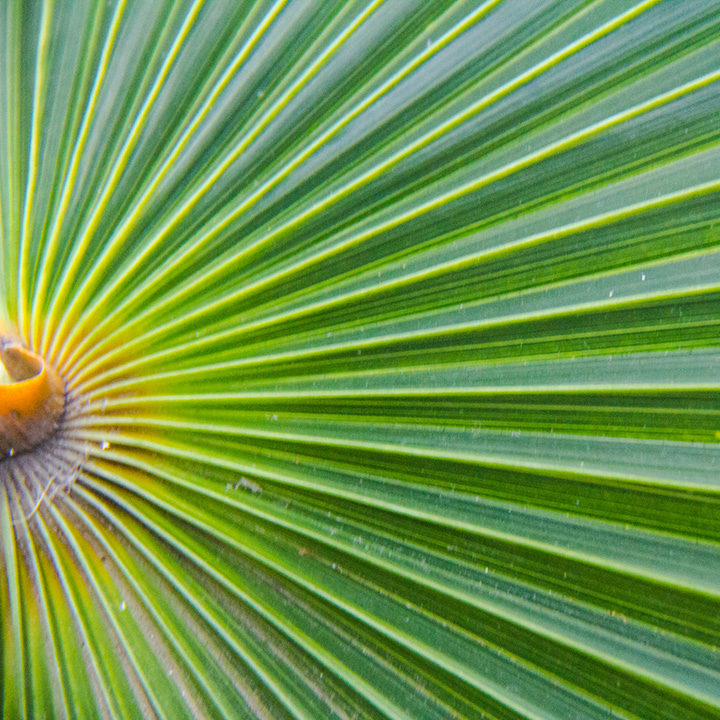Walls and Fences

One of the most common questions we’re asked is, "how do I create privacy in my garden?", closely followed by "how do I hide my fence?" Privacy, it seems, is at a premium these days. As our cities and suburbs become denser and more developed, boundaries and vertical surfaces become more and more central to garden design. Below, Kerry shares some of her best tips for creating an urban sanctuary.
Hiding a Fence
Fence Height
The first thing to ask here is – how high? Fences come in all shapes and sizes, from your tiny picket fence in a terrace’s front yard, to great big highway sound barriers (and everything in between). Your fence height will determine the type of plants you choose, and where and how to plant them. The most common fences in Australia are 1800mm boundary fences, in timber or power-coated metal. In an area with double storey homes (or taller), you’ll need something that will grow at least 3 to 4 metres tall to cover these, plus block any viewing angles from neighbouring windows.
Open Areas & Short Fences 0.9m – 1.5m
- Clumping Gingers
- Viburnums & Radermachera
- Hibiscus
- Star Jasmine
- Short Heliconias (psittacorum, rostrata)
Backyard Fences 1.8m – 3m
- Medium Heliconias (angusta, stricta & pendula)
- Clumping Palms (Ptychospermas, Chamaedoreas, Dypsis)
- Tiger Grass (Thysanolaena maxima)
- Tropical fruit trees (Sapote, Citrus, Artocarpus, Ficus)
- Rhapis Palms (in shady spots)
Taller Fences 3m and above
- Clumping Bamboo
- Tall Palms in staggered heights
- Native rainforest trees (Backhousia, Syzygiums, Buckinghamia, Xanthostemon, Tristaniopsis)
- Climbers & Vines
- Indian Mast trees
Foliage shape
Next up – foliage type. What kind of ‘look’ do you want in your garden? Screening plants are often your biggest, and their foliage will dictate the overall look of the space. You can create a tropical garden with a wide variety of leaf shapes, from shaggy looking shrubs to big glossy leaves.
Big Leaves
- Heliconias
- Bananas
- Philodendrons & Monsteras
- Alocasias & Colocasias
- Clumping Palms
Medium Leaves
- Brazillian Red Cloak
- Tiger Grass
- Gingers & Costus
- Native rainforest trees
- Passionfruit
Small Leaves
- Photinia & Waterhousea
- Radermachera & Murraya
- Clumping Bamboo
- Blueberry Ash
- Acacias
- Ficus pumila
Conditions
Finally – growing conditions. This covers a lot of factors, but it all boils down to “what kind of environment can I give my plants?” If you have a dry, sunny backyard with not much opportunity to water it – this will steer you towards certain plants. The opposite is true too – a damp, dark sheltered space won’t support every type of plant, and picking the right ones will ensure the best chance at success. Of course, you can always change these conditions through soil conditioning, irrigation, and hard work!
Using Wall Colour
In urban areas, rendered concrete or brick walls form a lot of the available space. If these surfaces are already painted in a nice colour – use it! Dark greys & blues will make plain greens pop. Neutral tones will give a backdrop to bright, hot colours in flowers, bracts and stems. And if you’re lucky enough to have a wall in a bright colour, match some of your plants to this shade (or get a colour wheel and go opposites) and see how the two complement each other!
Tight Spaces
If you’ve got a narrow space, or no open ground, climbing plants are the logical solution. Most grow well in containers (provided you create the right soil & drainage conditions) and can be trained into a variety of shapes. Bear in mind that they will grow towards the strongest light, and some species can end up with exposed stems, which will need covering with other foliage.
If you have a protected space, free from harsh sunlight and winds, your options open up considerably. Many understorey palms and perennials from the tropics will grow quite happily in a courtyard, alongside a house, or under cover.
For the opposite conditions, succulents and coastal plants will thrive in a hot, dry spot. Plenty of these species have large leaves that can give a tropical feel without the water & shade requirements. Many of the Dracaena, Agave and Crassula family can look quite architectural. Picking a few key specimens will stand out against a wall or background hedge.
Things to Remember
- Your wall or fence height and aspect will inform your plant choice
- Growing habit will determine how far away from the fence you plant them
- If you choose Bamboo or Rhapis palms, put in root barrier plastic along your boundary to prevent spreading
- Some climbers need support frames on sheer surfaces
- A horticulturalist can help you pick the right plants!
